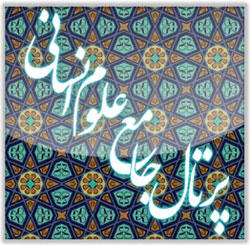Exploring the Foundations of Zoroastrian Mysticism with Emphasis on Its Commonalities with Islamic Mysticism
Keywords:
mysticism, Islamic religion, Sufism, ZoroastrianismAbstract
Mysticism is an inner spiritual phenomenon with a metaphysical essence and a transrational dimension, rooted in the pursuit of pure monotheism, culminating in annihilation in God (fanāʾ fi-llāh) and subsistence through God (baqāʾ bi-llāh). Through spiritual wayfaring toward God (sulūk ilā llāh), the human being becomes the manifestation of the divine names of majesty and beauty, a clear embodiment of God’s vicegerency (khilāfa) and a mirror reflecting the Divine countenance. Attaining such a lofty theomorphic station is exclusively actualized within the spiritually transformative framework of Islam. Nevertheless, other religions have also taken steps toward proximity to the Divine through various paths, although there are considerable differences in substance, form, and even the ultimate goal. Some researchers claim that Zoroastrian thought lacks mystical elements. However, a thorough examination of Zoroastrian texts reveals that Zoroastrian teachings are not devoid of mystical foundations; rather, these mystical elements have had a noticeable influence on both Eastern and Western mysticism. Therefore, the aim of the present article is to examine the mystical foundations of Zoroastrianism, with a particular focus on its commonalities with Islamic mysticism. This study is a descriptive-analytical research, and data were collected through library-based methods. The findings indicated that intellectual figures such as Ibn Yazdānyār of Urmia served as intermediaries in transferring Zoroastrian mystical thought into Islamic mysticism. While mysticism in Islam originates from the Qur’anic verses and Prophetic traditions, the ancient background and valuable heritage of the Zoroastrian religion cannot be overlooked. This heritage prepared the Iranian people for the embrace of mysticism. Therefore, it can be said that Aryan thought was inherently inclined toward mysticism.
Downloads
References
Amoli, S. H. (1988). Al-Muqaddimāt min Kitāb Naṣ al-Nuṣūs. Toos.
Asgari, A. (2005). A Study on the Philosophical Foundations of the Bahá’í Faith. Hafez Monthly(16).
Ayn al-Qudāt Hamadani. (1962). Tamhīdāt. —.
Corbin, H. (2004). The Man of Light in Iranian Sufism. Amoozgar Publishing.
Dehbashi, M., & Mirbagheri-Fard, S. A. A. (2015). History of Sufism, Vol. 1: The Development of Islamic Mysticism until the Sixth Century AH. SAMT.
Farghani, S. ī. a.-D. S. ī. (2007). Muntahā al-Madārik fī Sharḥ Ta‘iyyāt Ibn al-Farīd. Dār al-Kutub al-‘Ilmiyya.
Gowharin, S. S. (1989). Glossary of Sufi Terminology. Zavar.
Hafez, S. a.-D. M. (1940). Divān of Hafez. Ketāb Printing Co.
Ibn Arabi, M. Al-Futūḥāt al-Makkiyya. Dār Ṣādir.
Ibn Arabi, M. (2006). Fusūs al-Hikam. Karnameh.
Izz al-Din Kashani. (1988). Miṣbāḥ al-Hidāya. —.
Jami, A. (1991). Naqd al-Nuṣūs fī Sharḥ Naqsh al-Fuṣūs. Ministry of Culture and Islamic Guidance.
Jami, A. (2004). Ashi‘āt al-Lam‘āt. Ketāb-e Būstān.
Qushayri, A. a.-Q. ʿ. K. (2008). Nahw al-Qulūb. Egyptian General Book Organization.
Razi, H. (2000). Khosrowānī Wisdom. Behjat Publications.
Sabzavari, M. H. (1919). Glosses on Al-Asfār. —.
Sajjadi, S. J. (2004). Dictionary of Sufi Terms and Expressions. Tahouri.
Zarrinkoub, A. (1984). A Quest into Iranian Mysticism. Amir Kabir Publications.
Downloads
Published
Submitted
Revised
Accepted
Issue
Section
License
Copyright (c) 2025 Hadi Izadi Asli (Author); Behrouz Afshar; Mohammad Ali Yousefi (Author)

This work is licensed under a Creative Commons Attribution-NonCommercial 4.0 International License.







